If climate change is not stopped, what will happen to the earth?
If Climate Change Is Not Stopped Shortly, The Earth Will Face Irreparable Problems, And Many Parts Of It Will Be Destroyed.
This article reviews several critical and historical places in the world that are in danger of destruction.
Climate change is any specific change that occurs in expected weather patterns over a long period in a particular region or the entire global climate. Climate change is a phenomenon that occurs as a result of factors such as Earth’s dynamic processes or external factors such as changes in the intensity of sunlight or human activities.
External factors affecting the climate are often called “climate forces” and include fluctuations in the intensity of sunlight, deviations in the path of the Earth’s movement, and an increase in the concentration of greenhouse gases. Feedbacks caused by climate change are variable and may increase or decrease these internal factors.
The topic of climate change has attracted a lot of Attention since the beginning of the current century, Which we have not seen before.
The evidence of climate change is staggering. Since the industrial revolution, the global emission of carbon dioxide and other greenhouse gases has led to the phenomenon known as “global warming.”
The word “change” in the phrase “climate change” emphasizes that the pollution of the Earth’s atmosphere has led to significant weather events, one of which is global warming. With the increase in global temperature, desertification occurs, through which fertile areas turn into dry environments.
This article contains photos showing the devastating effects climate change will have on some of the world’s most popular tourist destinations if it is not stopped soon.
Statue of Liberty, New York – Present
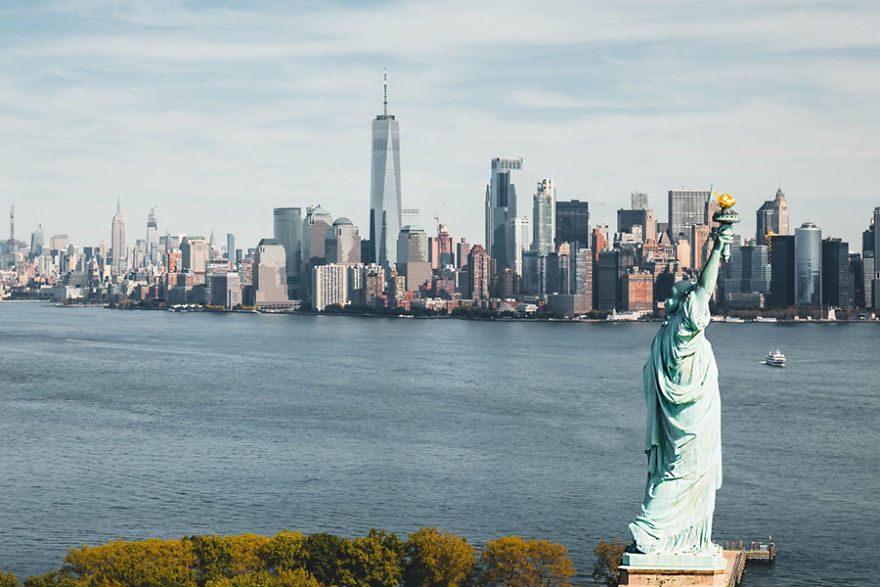
The Statue of Liberty is a sight that many consider being the symbol of America. This Statue of Liberty, whose official name is “Liberty Enlightening the World,” is a giant statue gifted to the United States of America by France in 1886. This statue is installed on Liberty Island in New York Harbor and the Manhattan area and has become a symbol of welcoming passengers who come to New York by sea.
This statue, covered with a copper top, was donated to this country in 1886 on the 100th anniversary of America’s independence from Britain and as a symbol of the friendship between France and America. Rising water levels will submerge cities around the world, and if climate change continues, in the future, the 93-meter Statue of Liberty will be barely visible above the water.
Statue of Liberty, New York – Future
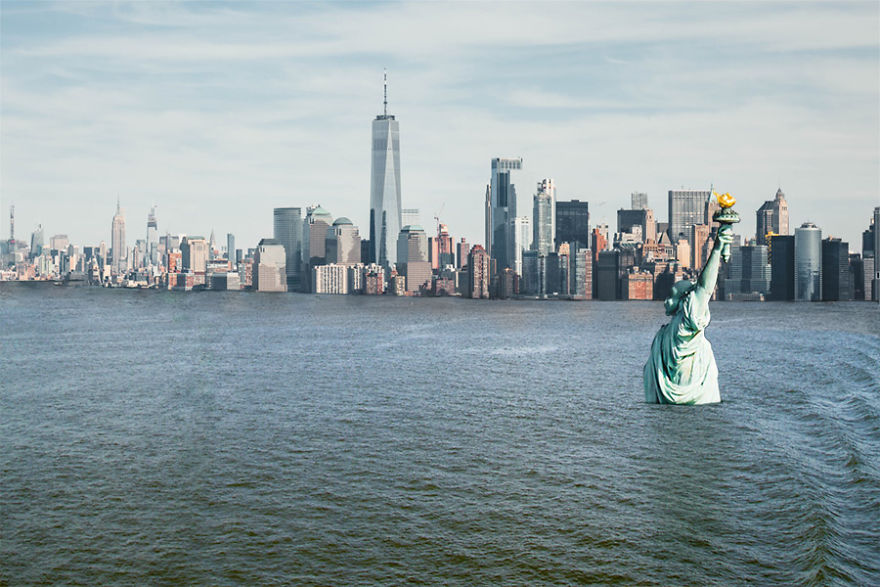
Climate change refers to abnormal climate changes in the Earth’s atmosphere and its consequences in different parts of the globe. Especially in current usage (in the category of environmental policy), the term “climate change” often refers to changes in the current climate. For example, in polar ice, the duration of these changes varies from ten to several million years.
In some cases, this phrase is also used assuming a human cause and effect relationship, As used in the United Nations Framework Convention on Climate Change (UNFCCC). The UNFCCC uses the term “climate change” to refer to changes that are of non-human origin.
Great Barrier Reef, Australia – Present
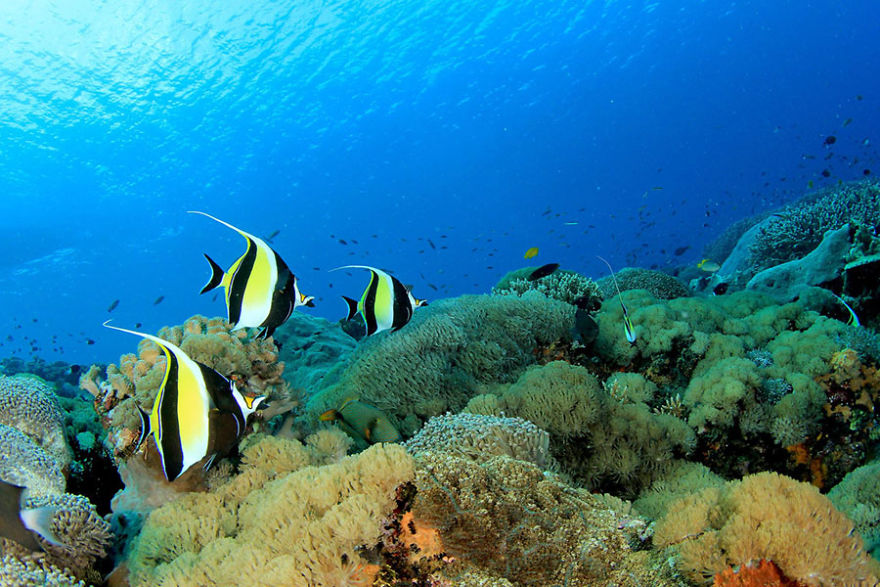
The Great Barrier Reef is a magical collection of life and color that all scuba diving enthusiasts visiting Australia want to discover. This dam is a vast collection of coral reefs in the Coral Sea in eastern Australia and the Pacific Ocean. The Great Barrier Reef is the most extensive collection of coral reefs in the world, one of Australia’s tourist attractions, and one of the symbols of the state of Queensland. The extent of this rock is such that it can be seen from outer space on Earth. This dam is also the world’s largest integrated ecosystem built by living organisms. Billions of living organisms, known as coral polyps, are residents of this reef. This collection was registered on the UNESCO World Heritage List in 1981.
In 2012, it was announced that the number of corals in the Great Barrier Reef had halved in 27 years. According to scientists, the reason for the decrease in these sea reefs is many storms and the increase in the population of starfish that suck the food of these corals; However, researchers believe that if starfish can be controlled, this coral wall will also be restored. In 2016, it was announced that 30% of the coral reefs had turned white; This amount of bleaching was not recorded before.
In October 2020, it was announced that the destruction and extensive bleaching of the Great Barrier Reef is continuing. The reason for the bleaching is the heat of the water, the high sun brightness, the acidic and chemical pollution of the water, and the effects of tourism. At the beginning of 2017, another 20% of the rocks of this wall turned white (half of the total). It was feared that this amount of whitening would increase.
Great Barrier Reef, Australia – Future
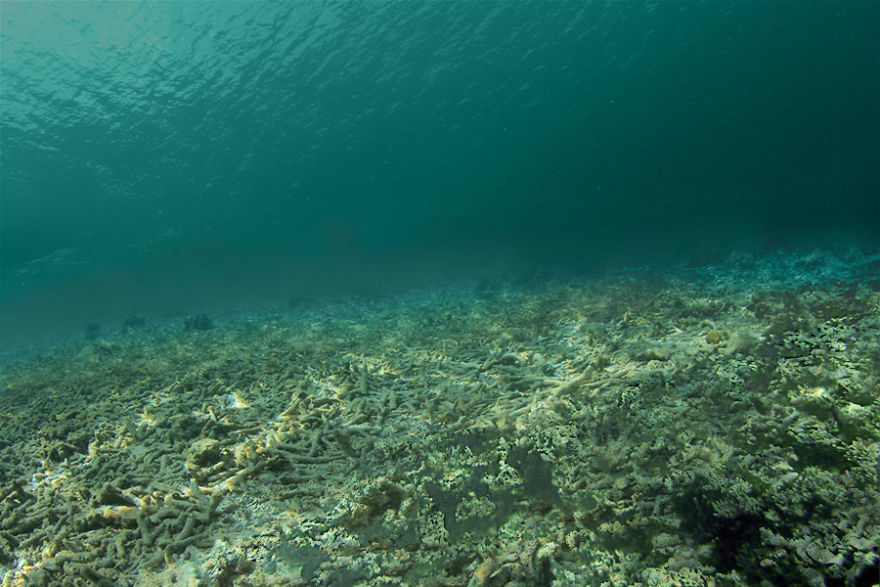
Many internal changes in climate systems occur with a delay; Because the Earth’s climate system is extensive, moves slowly, and responds to inputs with a delay. For example, a year of drought only causes a slight decrease in the level of lakes or the drying of the edges of flat lands. These conditions may lead to a reduction in rainfall and another drier year in the following years. When the critical point is reached after x years, the whole system may change in another way, leading to the cessation of precipitation. This example of climate change is rapid and reversible and occurs in a delayed manner.
Amazon Rainforest, Brazil – Present
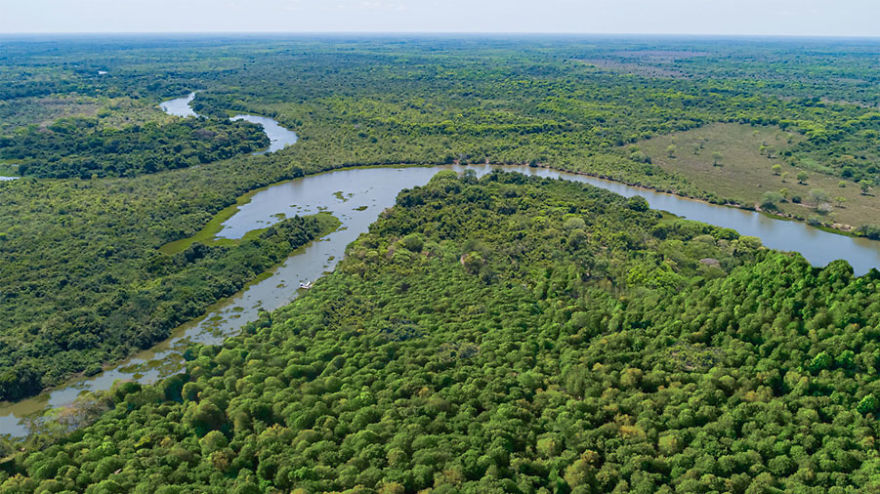
One of the most iconic places in the world is the Amazon rainforest, where people flock to Brazil to see its beauty. Deforestation is a significant threat to this natural landscape and will eventually lead to the loss of vegetation and the loss of all wild animals that live there.
Amazon is the largest rainforest in the world, located in northern South America, and most of it is in Brazil and Peru. More than half of all remaining rainforests in the world are in the Amazon. The area of the Amazon forests is 5.5 million square kilometers, which is divided between 9 countries. The Brazilian part of the Amazon has lost more than 18% of its forests in the last forty years (until 1369 solar), which covers an area equal to the size of California. Cutting down trees for wood, expanding soy plantations, and creating animal husbandry have caused this deforestation.
Amazon forests play a significant role in purifying the Earth’s air, which is why the Brazilian government committed to stopping deforestation in this country in 2009. Brazilians have committed to reducing deforestation by 80% by 2020 compared to what happened on average between 1996 and 2005.
Amazon rainforest, Brazil – future
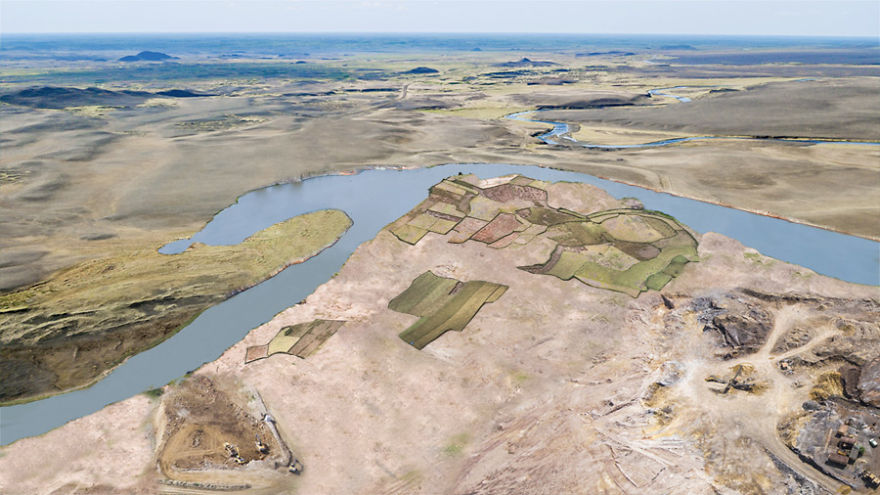
For more than three decades, the issue of climate change has been raised at the international level and has involved all regions of the world in its problems and crises. The topics and concerns related to it have become so intense that humanity must adapt. By studying the global temperature increase and the Earth’s crust since 1900, scientists have concluded that the Arctic and the regions adjacent to the equator were the first areas to experience global warming. Therefore, in the Northern Hemisphere, the mid-latitude parts have seen the highest temperature increase; some areas of the world, such as tropical regions, have experienced a decrease in temperature. Of course, it should be noted that the experts did not include the temperature of the South Pole in this study.
Antarctica – Present

Antarctica is known as a beautiful white natural landscape that many of us dream of traveling to. Rising temperatures are predicted to melt the Antarctic ice sheets, leaving a bare landscape beneath. Also, rising sea levels could lead to the disappearance of Antarctica, and in this case, the animals that live there would have no way to survive.
Antarctica – the future
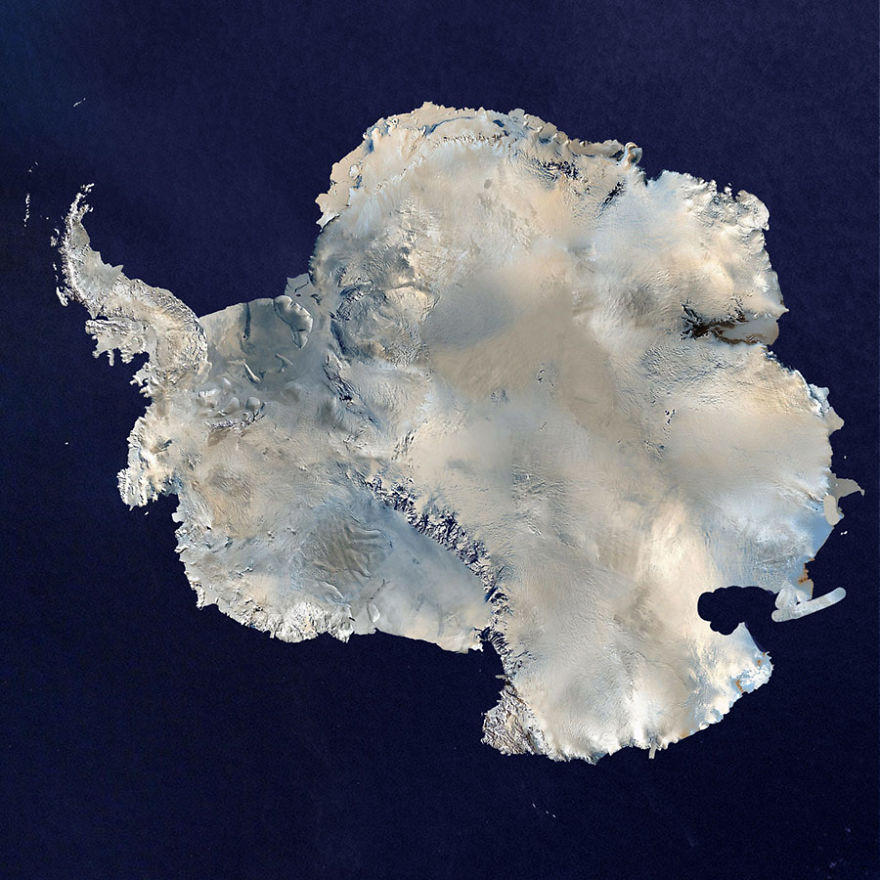
One of the most critical factors in global warming is the increase in greenhouse gases, which has put the world on the brink of a significant human and environmental disaster. Scientists believe that the leading cause is the release of gases, including carbon dioxide, from fossil fuels. The increase in the temperature of the Earth causes the melting of polar ice, the rise of water levels, the disappearance of some cities, especially coastal cities and islands, the occurrence and intensification of sea storms, flooding, the reduction of drinking water and agricultural products, the intensification of soil erosion, the destruction of some It will be of plant and animal species and will also result in environmental migrations. Public opinion is currently increasing that the next 18 months are vital in dealing with the global warming crisis and ecological challenges.
Parthenon, Greece – Present
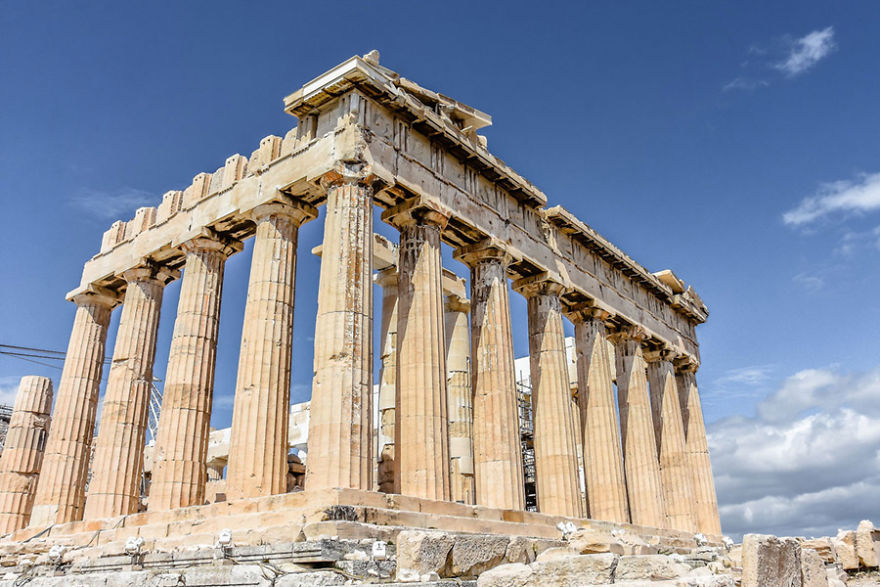
The Parthenon is an ancient temple on the Acropolis of Athens that Pericles built 2,500 years ago. The Parthenon Temple is located at the highest point of the Acropolis. The word Parthenon comes from the Greek Parthenos, meaning virgin. Athena is sometimes called the Athena of Parthenos. The Parthenon stood between 477 and 432 BC, and Phidias designed its sculptures. This temple, which is one of the most symbolic places in the world, is still standing after thousands of years. It is predicted that in the future, carbon emissions, frequent tourism, and acid rain will cause the collapse of this ancient structure.
Parthenon, Greece – the future
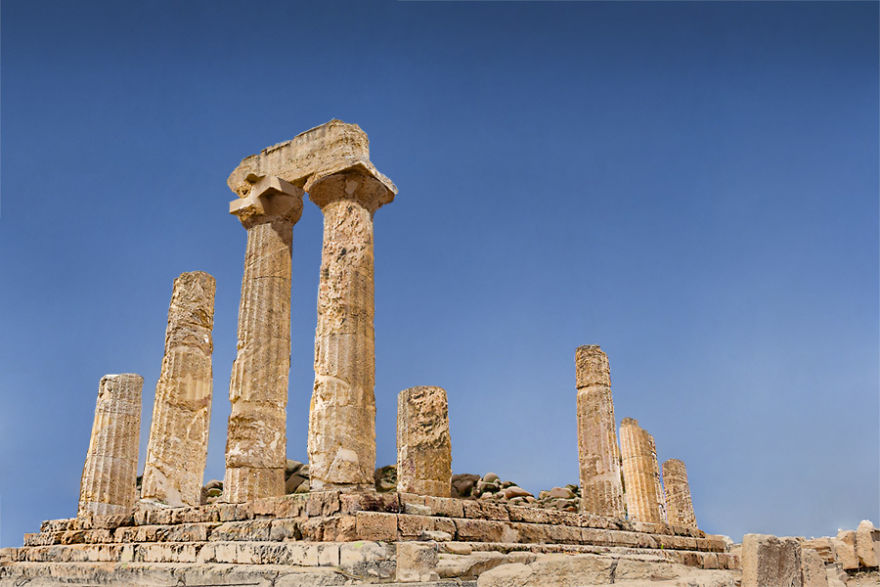
Last year, the Intergovernmental Panel on Climate Change (IPCC) reported that for the global temperature not to increase by more than one and a half degrees Celsius this century, carbon dioxide production must be reduced by 45% by 2030; But now the experts have concluded that for this reduction, decisive political measures must be taken before the end of next year. One of the world’s most senior scientists on climate change clearly warned in a speech in 2017 that 2020 is the deadline to stop global warming. Hans-Joachim Schellnhuber, the founder of the Potsdam Institute for Climate Change, said: “The calculus of climate conditions is quite clear: the world (warming) cannot be cured within the next few years; But as a result of negligence, a fatal injury may be inflicted on the world by 2020.”
Venice, Italy – Present

Venice is one of the most romantic places in the world for young couples. This city is at high risk due to the high number of tourists and has suffered a lot of damage due to many visits. It is predicted that this city will soon be submerged entirely due to the rising water level due to climate change.
Venice, Italy – The future

It is felt more and more that the end of 2020 is the last chance to control the climate. Prince Charles, the former Crown Prince of the United Kingdom, during a speech at a banquet for foreign ministers of the Commonwealth of Nations, announced that the next 18 months would show the human ability to keep climate change at a level that makes his survival possible, as well as bringing nature back into balance. How much is necessary?
Since the global climate change agreement was signed in Paris in December 2015, negotiators have spent most of their time discussing the rules and regulations of this agreement. According to the provisions of this agreement, countries have promised to improve their plans to reduce carbon dioxide production by the end of 2020.
Three Sisters Mountains, Australia – Present

“Three Sisters” is a rock formation in New South Wales, Australia, and is considered one of the most prominent and well-known points of the Blue Mountains overlooking the Jamison Valley. The “Three Sisters” rock peaks are respectively 922, 918, and 906 meters high and are visited by millions of tourists annually. These mountains are one of the top tourist attractions in Australia, which are made up of only beautiful natural stones and extraordinary landscapes. It is expected that the increase in temperature and bushfires will destroy the natural landscapes in this area and leave burned landscapes devoid of greenery.
Three Sisters Mountains, Australia – Forthcoming
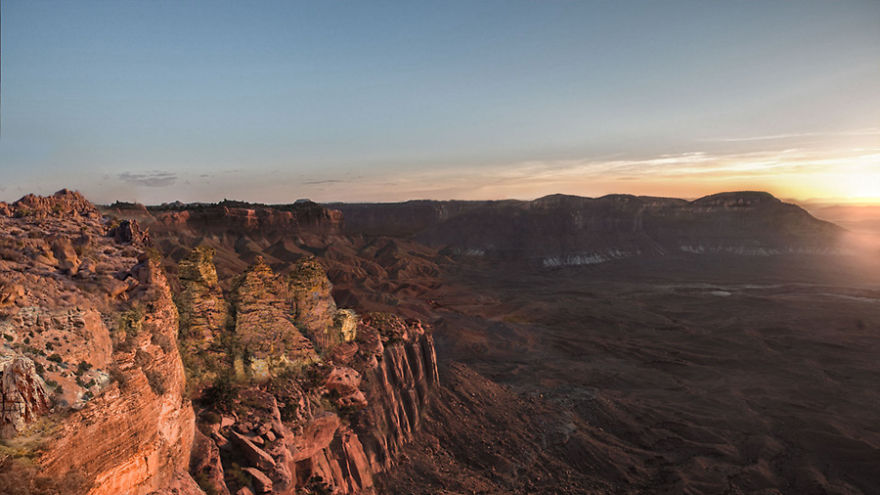
Last year, a report on climate change was published stating that to keep the global temperature increase below one and a half degrees Celsius, carbon dioxide production must be reduced by 2020. Since the planning period of countries is usually 5 to 10 years, if the 45% reduction of carbon dioxide production by 2030 is to be achieved, these plans must be prepared by the end of 2020. Given the conditions in 2020, current methods are insufficient to bring temperatures below what is considered safe. In the current situation, we can say that by the year 2100, the increase in air temperature will be 3 degrees Celsius, not one and a half degrees.
Pasteururi Glacier, Peru – Present
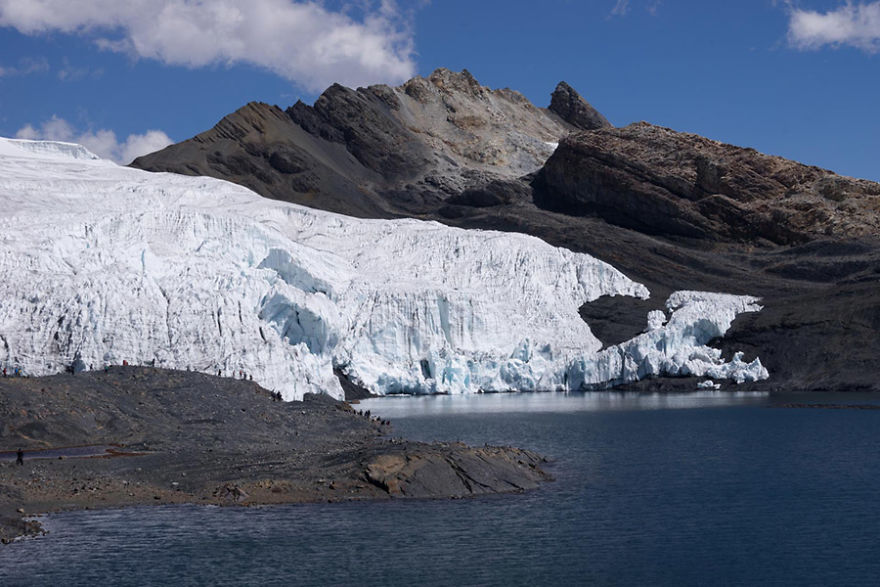
According to government study data, climate change in the last four decades has reduced the number of Peru’s natural glaciers by 40% and, on the other hand, has led to the creation of hundreds of new mountain lakes. One of the most famous natural glaciers in the world is the Pasteurori Glacier, and Peruvian tourists are amazed by the beauty of the structure of this glacier. It is predicted that the natural glaciers will melt soon, and nothing will be left except rocks. Peru has about 2,800 natural glaciers in 19 snow-capped mountains. The water from these glaciers is the primary source of drinking water for the people of this country. Climate change can add a water shortage crisis to the problems of the poor people of this country in the coming years.
Pasteururi Glacier, Peru – Future
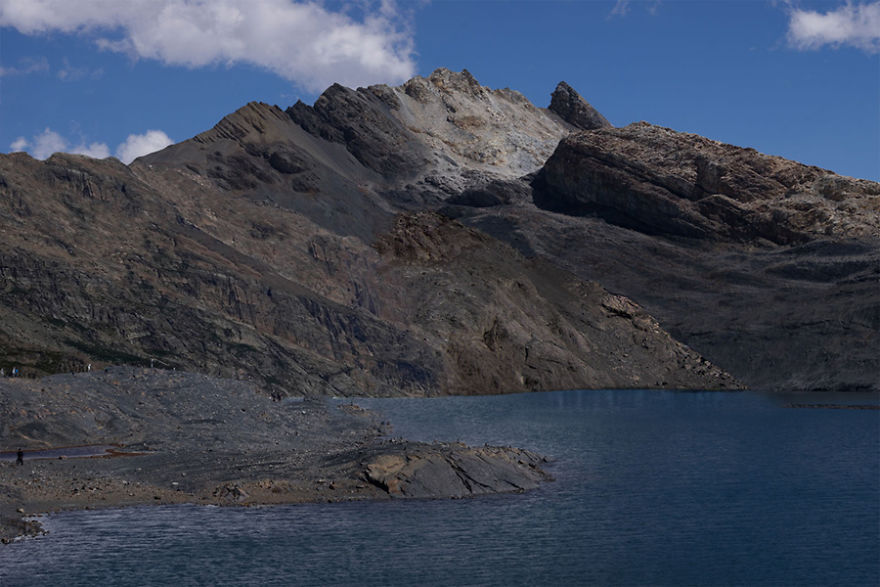
Over thousands of years, humans have proven to be intelligent creatures and can adapt to the changing climate in other parts of the planet. Still, new research indicates that the future is much more complex than the current situation in terms of climate change. In the not-too-distant future, humans will witness severe changes in the temperature of the planet and will experience a very different life. Recent studies by scientists show that the temperature of the Earth will become hotter in the next fifty years, and many people will experience living in climate conditions like the African Sahara. Now a limited population of humans lives in the coldest and hottest parts of the planet, But probably in the next few years, millions of people will have to live in more challenging conditions.
Stonehenge, England – Present
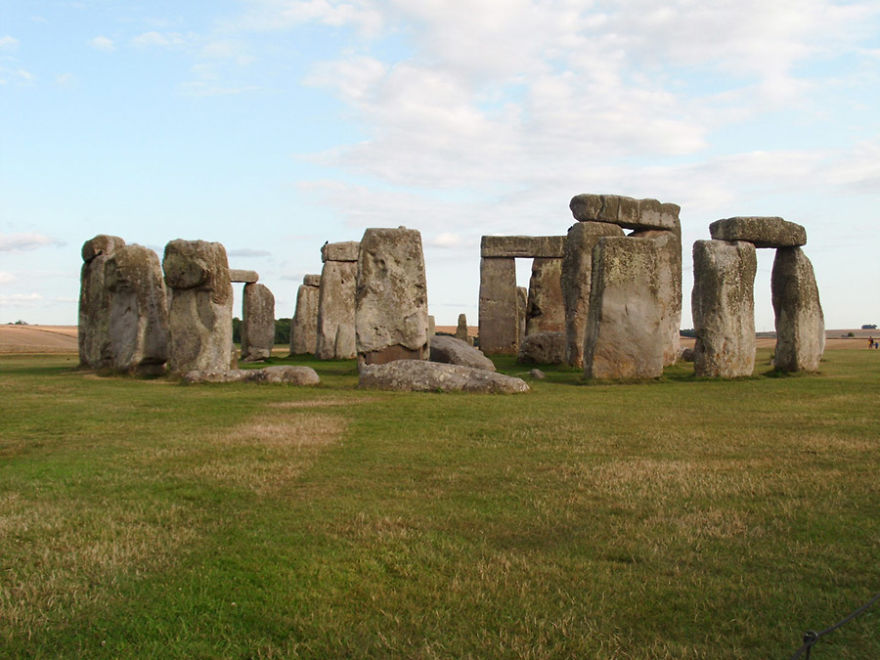
Stonehenge is a prehistoric monument in Salisbury Plain, Wiltshire, in southern England. This work is a remnant of the Neolithic and Bronze Age and consists of a ring of Sarsenian stones, which are placed around a set of horseshoes composed of five cut Sarsenian three-stones. Stonehenge is considered one of the most mysterious places in the world and is on the list of many travelers. This remarkable place of wonder may be destroyed by moles that erode the surface of the Earth. Moles are small mammals that live underground. The population of moles increases daily due to the increase in temperature.
Stonehenge, England – Future
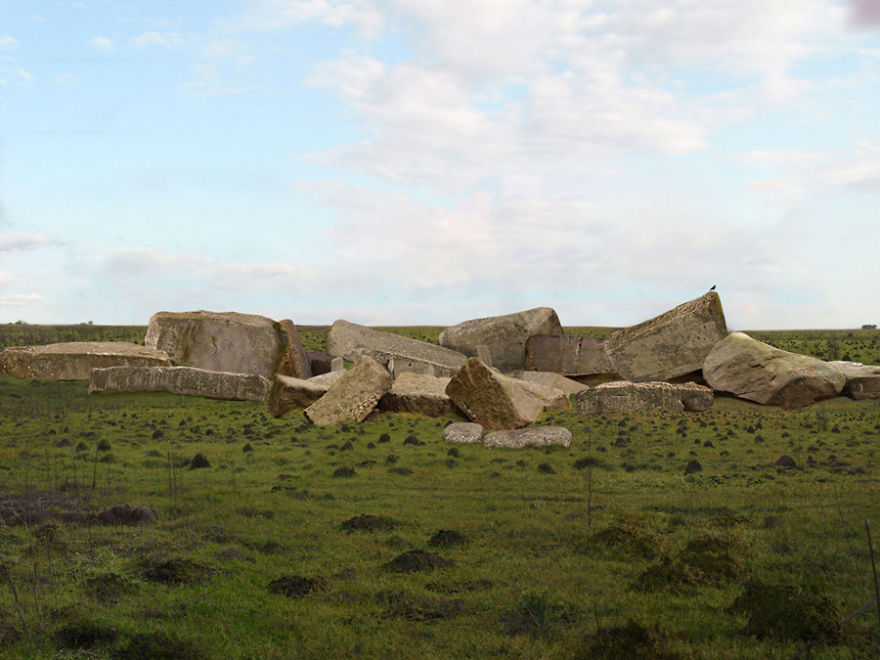
After studying the 6,000 years of human life in different parts of the planet, a group of scientists from Nanjing University, China, concluded that most of the world’s population has lived in a climate with an average of 15 degrees Celsius. But in fifty years, the average temperature of the planet earth will change drastically and reach 29 degrees Celsius; in the most extreme case, more than 3.5 billion people will live in a climate like the African Sahara region.
Current humans who live in scorching areas like the African Sahara adapt themselves to an average temperature of 25 to 27 degrees Celsius and spend their lives without severe physical damage. Of course, this coordination did not happen in just one or two years, and the residents of this area have reached this physical ability over hundreds of years; But if the global temperature increases in a short period, will humans still be able to resist and adapt to the new environmental conditions? Fire, excessive use of natural resources, and pollution production are the most critical factors of global warming. These factors have endangered not only human life but also the life of all living beings on the planet. Today, 75% of people’s food comes from 12 types of plants and five species of animals.
Mumbai, India – Present

Mumbai, formerly known as Bombay, is the capital of Maharashtra state and one of the most important cities in India. Bombay means good beach in Hindi. The Portuguese colonists gave this name to this city. In 1996, the name of this city was changed to “Mumbai,” the name of one of the Indian goddesses. But outside India, this great port is still known as Bombay. Being one of the most popular cities in India for foreign visitors, it is culturally full of exciting places to visit. However, the increase in population in Mumbai and the increase in the number of tourists in this city will lead to overcrowding and dire living conditions; Because soon all the free space in this city may be occupied to build low-quality houses.
Mumbai, India – The future

Farmers in unfavorable areas go to places with better and more temperate climates to grow crops. Unfortunately, people’s inattention to environmental protection has gradually caused regions suitable for agriculture to lose their ideal conditions. With the continuation of such a trend in the coming years, humans will experience a tough life, and farmers in various countries will not be able to provide the food needed by the population of their city or place of residence; In this regard, one of the future crises is the global food crisis. Detailed scientific studies show that only 2 degrees of temperature increase on the global scale can cause irreparable disasters. Indeed, as the global temperature rises, freshwater resources will decrease rapidly, and people will face a water crisis in addition to the worldwide food crisis.
The evidence suggests that if we act now to deal with global warming, it will be too late, and we will see more massive droughts in the next fifty years, But we must not forget that there is still time to save the planet. Almost all scientific research has shown that using clean energy such as solar, wind, and sea power instead of fossil energy sources can significantly reduce the amount of pollution on the planet. A simple example that we witnessed these days due to the spread of corona disease and the decrease in the use of vehicles by people was the improvement of the air pollution situation in areas of the Earth that had been dealing with this problem for many years.
Victoria Falls, Zambia – Present

Victoria Falls is a natural waterfall in southern Africa, located on the Zambezi River and the border of Zambia and Zimbabwe. This waterfall is one of the most spectacular tourist places in the world. In 2019, it was predicted that this waterfall would also dry up forever due to the increase in temperature and drought.
Victoria Falls, Zambia – Future

Maybe the people of different regions can’t adapt quickly to hot and dry weather conditions. Still, if appropriate measures are taken to prevent overheating of the Earth, the amount of human and financial damage will be reduced. In this way, more than 3.5 billion people of the world’s population, who, in news reports, are required to live in a temperature equal to the heat of the African Sahara, will no longer experience extreme conditions with this process.
Technology has advanced at an incredible speed in recent decades. However, in many regions of the world, especially in countries with many financial problems, farmers grow their crops in dryland due to the lack of water resources. This type of agriculture entirely depends on the amount of annual rainfall; if it does not rain, there will be no crop. Even if it rains enough, due to the rising temperature, the productivity of the workers and farmers working on the agricultural land will decrease, and they will not be able to work for hours as in normal conditions.
Governments should start a global effort to deal with global warming together with people and preserve the Earth for future generations. Maybe our life’s path will affect the Earth so much by next year that it will be difficult to enjoy every day of life.











